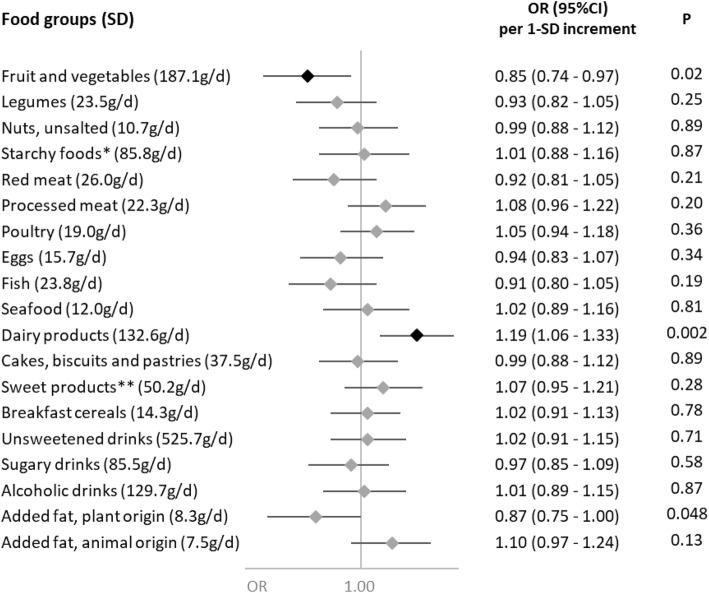Fig. 2.
Food group consumption and SARS-CoV-2 infection (ELISA-S), NutriNet-Santé cohort (2009–2020)—SAPRIS-SERO. ELISA-S positive (n=311) compared to ELISA-S negative (n=7455) participants. Odds ratios and 95% confidence intervals per 1-SD increment obtained from multi-adjusted logistic regression models including sex (men/women), age, educational level (< high-school degree/high-school degree/undergraduate degree/graduate degree), employment status (no professional activity prior to lockdown: unemployed, retired, homemaker/short-time working/working outside home/working from home/student, trainee and other), smoking status (non-smoker, former smoker, smoker), presence of children and/or grandchildren aged under 18 years at home (yes/no), residential area (rural area/city < 20,000 inhabitants/city ≥ 20,000 to 100,000 inhabitants/city > 100,000 inhabitants), frequency of going out over the past week (never/once/2 to 5 times/6 to 10 times/> 10 times), prevalent chronic disease (cancer, cardiovascular disease, high blood pressure, diabetes, dyslipidemia; yes/no), geographical area (Paris Basin/Centre-East/East/Mediterranean/North/West/Paris region/Southwest), BMI and physical activity level (high, moderate, low) prior to the March 2020 lockdown, month of blood draw (May–June/July/August-September–October), number of 24 h dietary records, energy intakes (without alcohol, kcal/day), alcohol intakes (g/day; except for alcoholic drinks) and a composite score reflecting the adherence to recommended protective behaviors when going out. Starchy foods: bread, pasta, rice, potatoes, starchy vegetables, etc.; sugary products: chocolate, sweets, honey, sugary desserts, etc.

